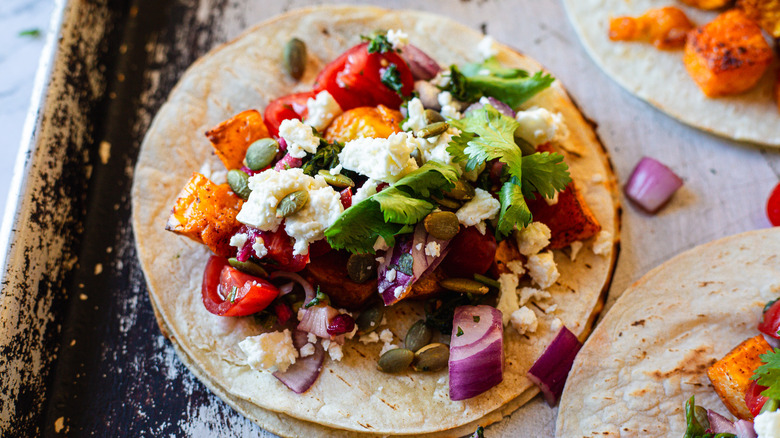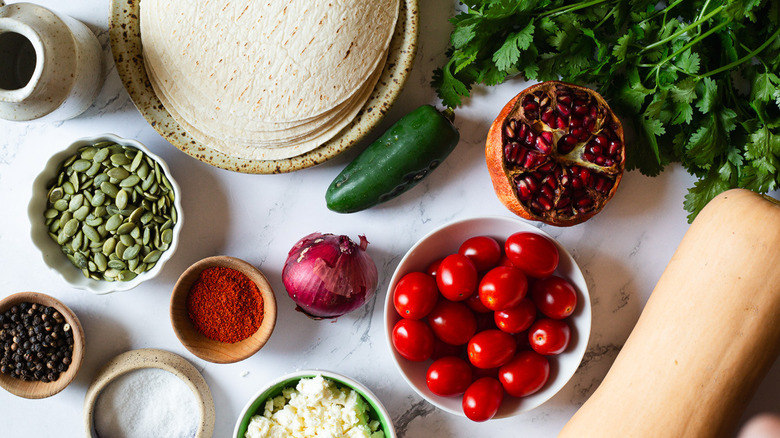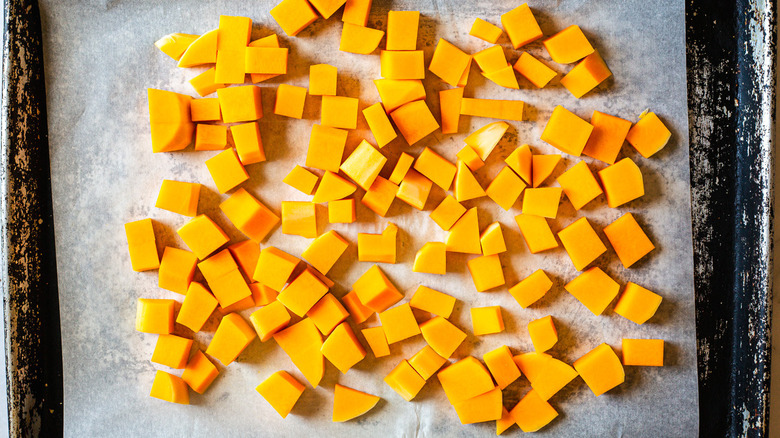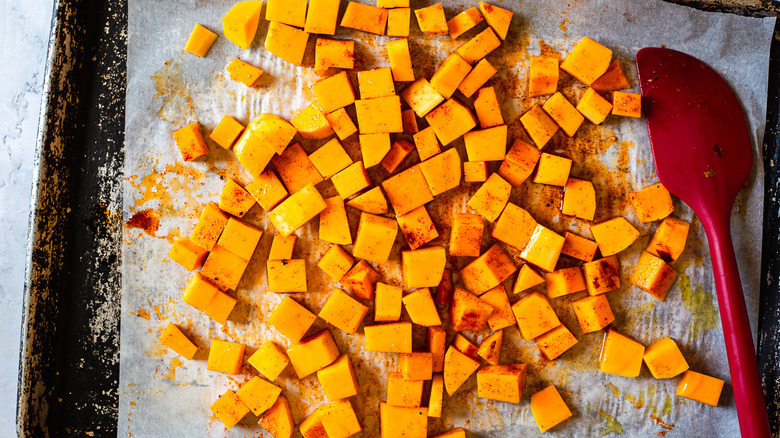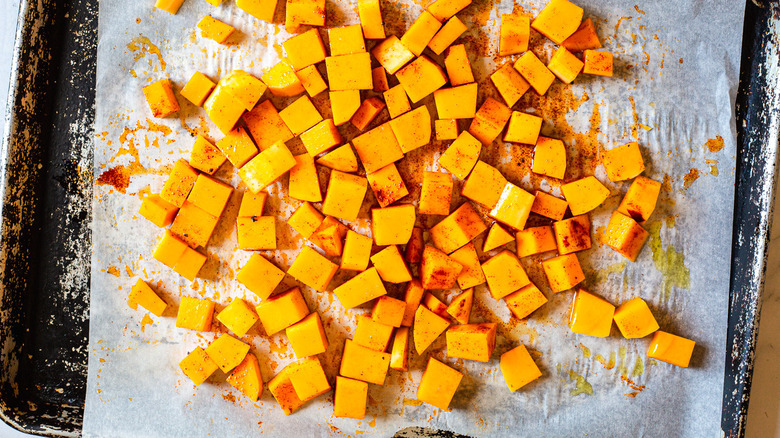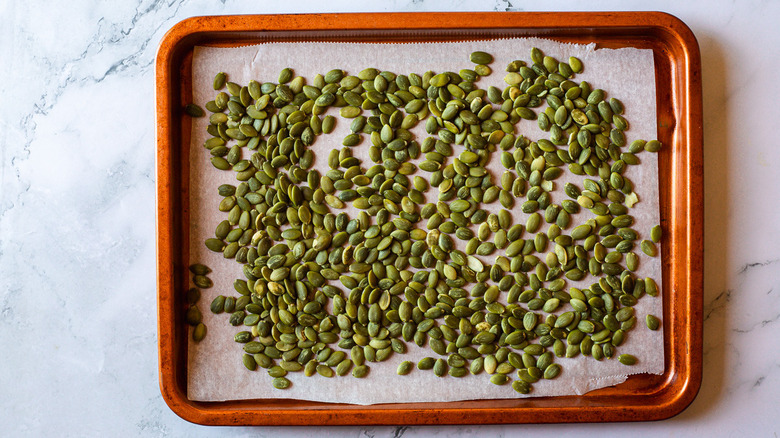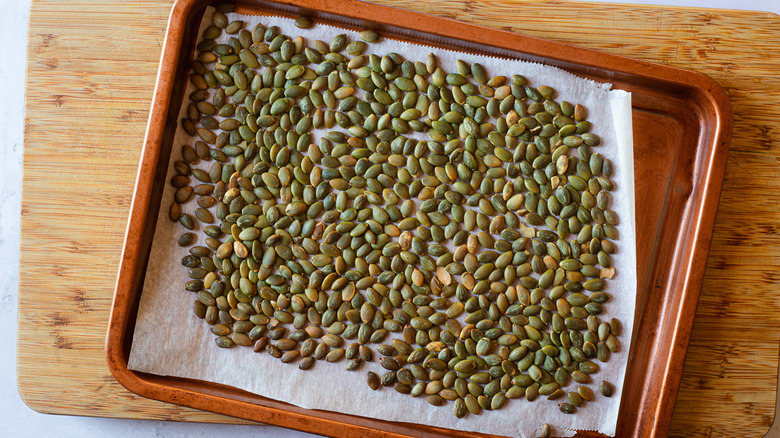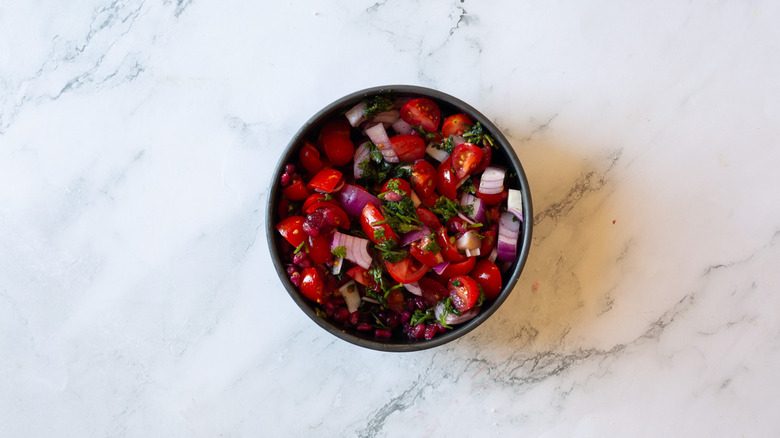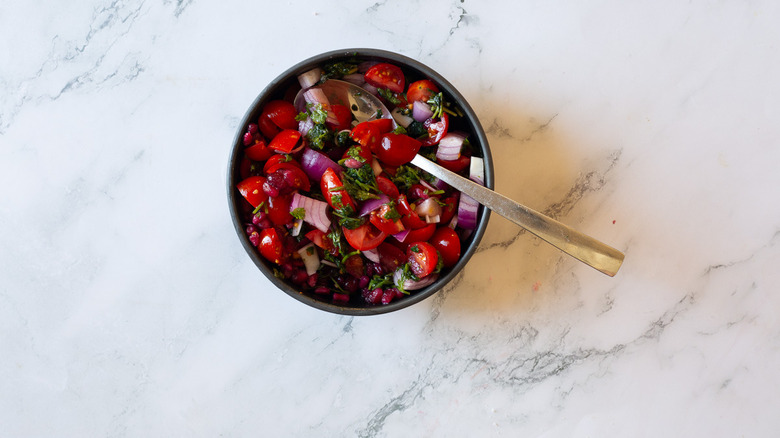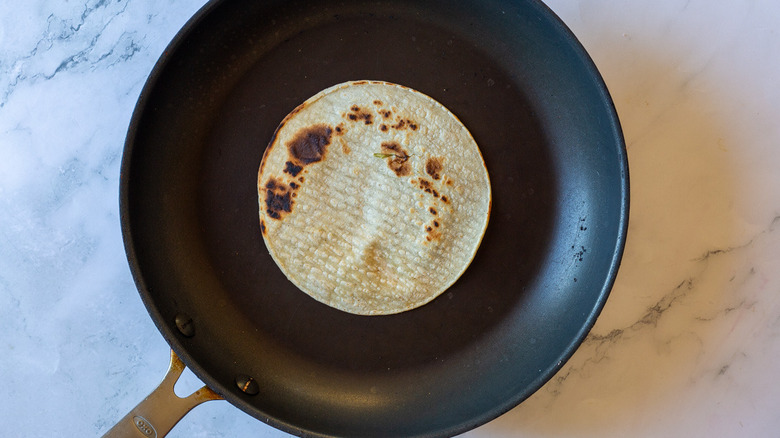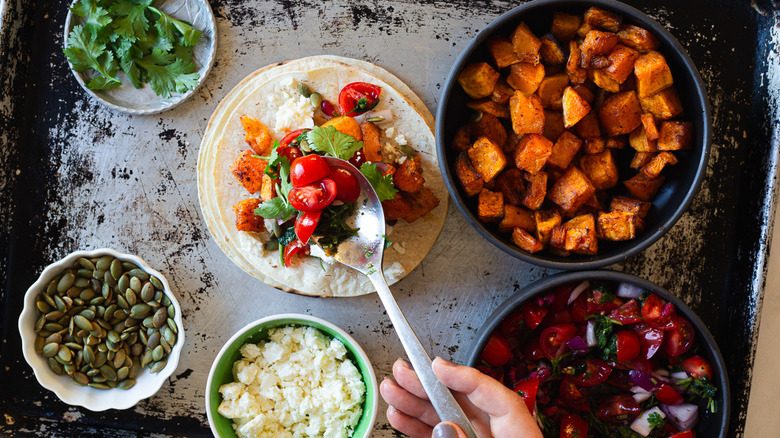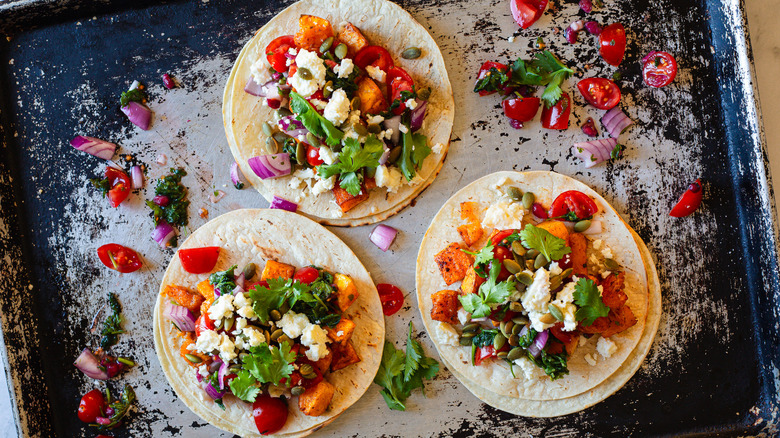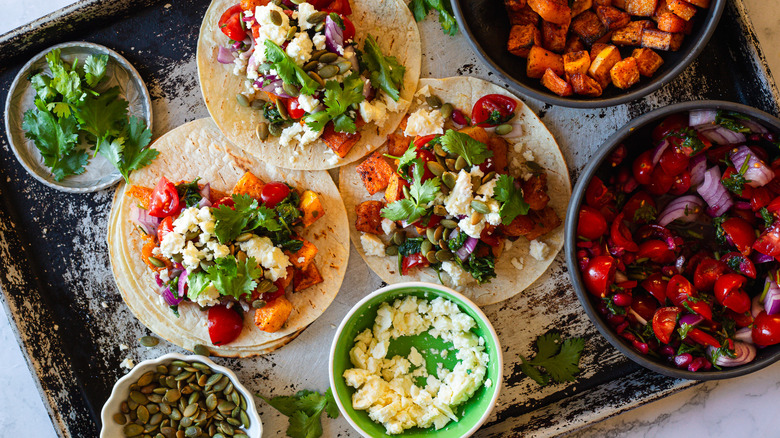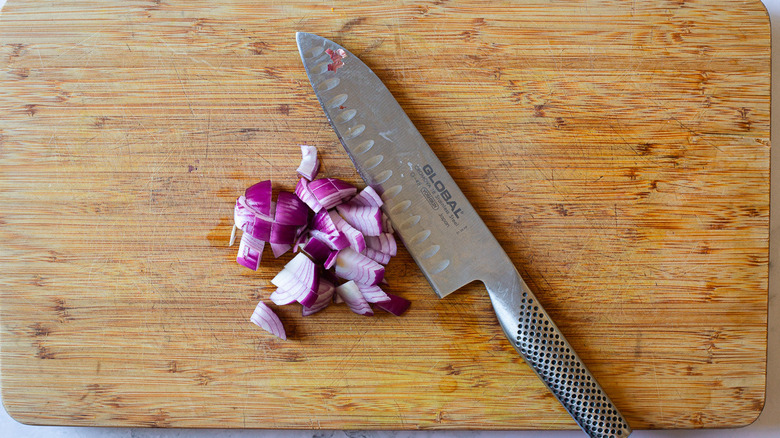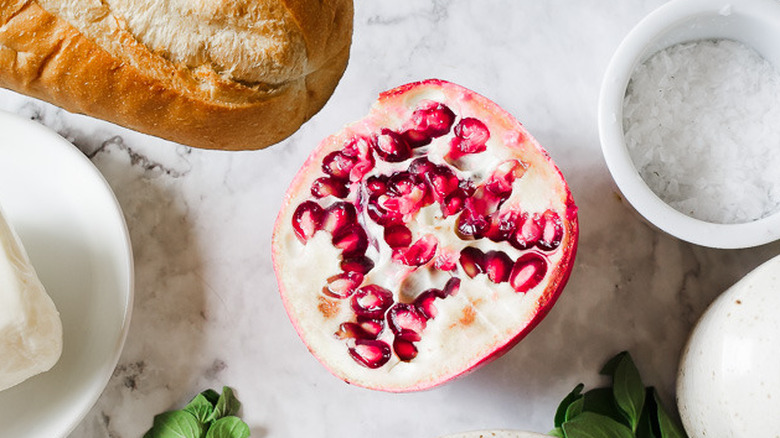Butternut Squash Taco With Pomegranate Pico Recipe
If you're looking for a new way to enjoy tacos, then this recipe combining roasted butternut squash and a tangy pomegranate pico de gallo might be perfect for you. The sweetness of the squash is perfectly balanced by the acidity of the pico, making for a flavorful and colorful taco filling.
This recipe for butternut squash tacos with pomegranate pico comes to us from Ksenia Prints of At the Immigrant's Table, and she explains that pomegranate is a symbol of fertility, prosperity, and bounty in many cultures, and it is often eaten during the fall harvest season. By incorporating pomegranate seeds into this dish, you're not only adding a burst of freshness and sweet acidity, but also a touch of cultural significance to your meal.
The best part is that this recipe can be tweaked to be plant-based and gluten-free, making it a great option for anyone with dietary restrictions. Though it looks impressive, it is rather easy to prepare and can be customized to your liking with additional toppings such as hot sauce or pickled onions. With only a few ingredients and less than an hour of prep and cook time, you can have a delicious and healthy taco dinner on the table.
Gather the ingredients for this butternut squash taco with pomegranate pico recipe
Oftentimes, the best dinners come together from the most disparate ingredients, and these butternut squash tacos with pomegranate pico are no exception. You will start with a butternut squash, the primary filling ingredient. Olive oil, chili powder, salt, and pepper are used to season the butternut squash cubes before roasting. Pumpkin seeds will be toasted to add crunch, while cherry tomatoes, red onion, cilantro, and pomegranate seeds come together to make the tangy pico de gallo topping. This whole fusion goodness will be wrapped in warm corn tortillas. Finally, feta cheese contributes salty, creamy bites to these vibrantly colored tacos, which feature fall's best flavors in each bite.
Step 1. Prep two baking sheets
Preheat your oven to 425 F and cover 2 baking sheets with parchment paper.
Step 2. Spread the butternut squash on a baking sheet
Spread butternut squash cubes on a baking sheet lined with parchment paper.
Step 3. Season the squash
Toss the butternut squash with olive oil, chili powder, and a pinch of salt and pepper.
Step 4. Roast the squash
Bake for 30-35 minutes, until the squash is tender and slightly crispy on the edges, tossing it halfway.
Step 5. Spread the pumpkin seeds on a tray
While the squash is baking, arrange the pumpkin seeds on a small baking sheet.
Step 6. Roast the pumpkin seeds
Transfer to the oven to toast for 5 minutes.
Step 7. Make the pico de gallo
To make pomegranate pico, combine cherry tomatoes, diced onion, pomegranate seeds, fresh cilantro, salt and pepper in a bowl.
Step 8. Mix the pico
Mix well to combine.
Step 9. Warm the tortillas
Warm your corn tortillas in a skillet.
Step 10. Assemble the tacos
Assemble your tacos with roasted squash, feta cheese, pomegranate pico, pumpkin seeds and any optional toppings you like.
Step 11. Serve the butternut squash tacos with pomegranate pico
Serve butternut squash taco with pomegranate pico immediately.
Can I make butternut squash tacos in advance and reheat them later?
Preparing the butternut squash tacos in advance and reheating them later is a great way to save time and effort in the kitchen. You can make the different components — the roasted butternut squash filling and the pomegranate pico — a few days in advance. To ensure that the tacos maintain their texture and flavor, it's important to store the components separately in airtight containers.
The pomegranate pico will have a shorter shelf life, so don't let it sit around for more than 2 days before use. The squash can be roasted or sauteed 3 days ahead of time and stored in the fridge until you're ready to reheat it. When reheating the squash, it's best to do so in a skillet over medium heat until heated through. This will help to maintain the texture and flavor of the squash. The tortillas can also be prepped in advance and stored in an airtight container in the fridge. When reheating the tortillas, be sure to wrap them in a damp paper towel to prevent them from drying out. Once everything is reheated, you can assemble the tacos with your desired toppings and enjoy!
What can I use as optional toppings for these tacos?
When it comes to toppings for butternut squash tacos, the possibilities are endless. We provided our favorite combination, which includes feta cheese and pumpkin seeds. Some other great options to consider include adding more cilantro for a fresh burst of flavor, hot sauce for some extra heat, fresh jalapeno for a bit of crunch, or pickled onions for a tangy twist.
You can also experiment with different types of cheeses, such as crumbled queso fresco or grated cheddar, or add some sliced avocado or guacamole for a creamy texture. Alternatively, you can add a dollop of crema, sour cream, or Greek yogurt to balance out the flavors. The key is to get creative and have fun with your toppings—don't be afraid to mix and match different ingredients to find the perfect combination and make this taco night into a party.
Can I use store-bought pomegranate seeds, or must I extract them from a whole pomegranate?
If you want to save time and effort when making butternut squash tacos, store-bought pomegranate seeds are a great option. You can find them in many grocery stores, either frozen or refrigerated, and they work just as well as seeds extracted from a whole pomegranate. However, if you prefer to extract the seeds yourself, that's a great option too. Just make sure to remove any white pith from the seeds.
Extracting pomegranate seeds can be a bit messy, so avoid wearing white and do the work over a big bowl. One simple trick for removing pomegranate seeds is to cut the pomegranate in half, hold it over a bowl, and gently tap the back with a wooden spoon to release the seeds. Whether you use frozen, fresh, or vacuum-preserved pomegranate seeds, they will add a burst of sweetness and texture to the tacos that complements the savory flavors of the squash and other toppings.
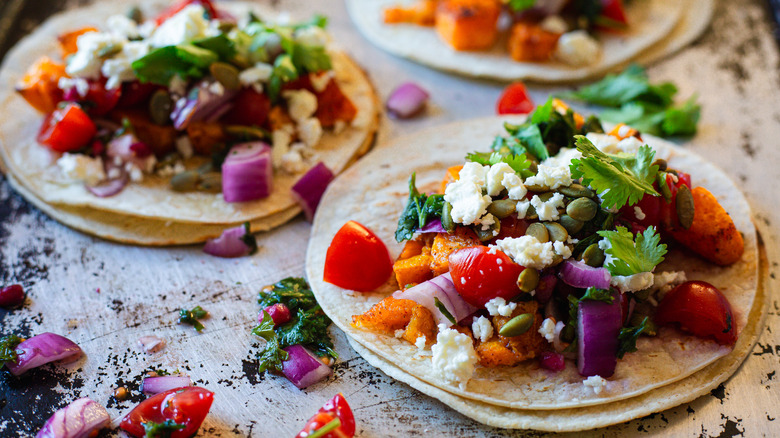
- 1 2-pound medium butternut squash, peeled and cubed
- 2 tablespoons olive oil
- 1 teaspoon chili powder
- Salt and pepper, to taste
- ½ cup pumpkin seeds
- 8 cherry tomatoes, diced
- ½ red onion, diced
- ¼ cup pomegranate seeds
- ¼ cup cilantro, stems removed
- 1 teaspoon salt
- ½ teaspoon pepper
- 8 corn tortillas
- ¼ cup feta cheese
- Preheat your oven to 425 F and cover 2 baking sheets with parchment paper.
- Spread the butternut squash cubes on a baking sheet lined with parchment paper.
- Toss the butternut squash with olive oil, chili powder, and a pinch of salt and pepper.
- Bake for 30-35 minutes, until the squash is tender and slightly crispy on the edges, tossing it halfway.
- While the squash is baking, arrange the pumpkin seeds on a small baking sheet.
- Transfer to the oven to toast for 5 minutes.
- To make pomegranate pico, combine cherry tomatoes, diced onion, pomegranate seeds, cilantro, salt and pepper in a bowl.
- Mix well to combine.
- Warm your corn tortillas in a skillet.
- Assemble your tacos with roasted squash, feta cheese, pomegranate pico, pumpkin seeds and any optional toppings you like.
- Serve butternut squash taco with pomegranate pico immediately.
Nutrition
| Calories per Serving | 392 |
| Total Fat | 18.6 g |
| Saturated Fat | 3.9 g |
| Trans Fat | 0.0 g |
| Cholesterol | 8.3 mg |
| Total Carbohydrates | 51.9 g |
| Dietary Fiber | 9.5 g |
| Total Sugars | 8.0 g |
| Sodium | 862.0 mg |
| Protein | 11.8 g |
